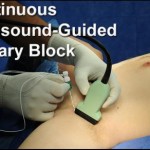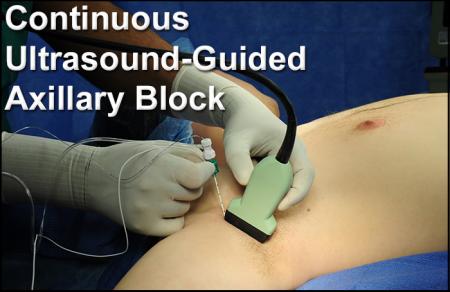 Ultrasound guided regional anesthesia has quickly established itself as the preferred technique for placing blocks. Several models of ultrasound devices are available and each vendor touts their product as the best. Time for placement, success of the block and patient satisfaction all reinforce ultrasound guided placement as the method of choice for regional anesthesia.
Ultrasound guided regional anesthesia has quickly established itself as the preferred technique for placing blocks. Several models of ultrasound devices are available and each vendor touts their product as the best. Time for placement, success of the block and patient satisfaction all reinforce ultrasound guided placement as the method of choice for regional anesthesia.
CME meetings across the country are offering hands on workshops to teach anesthesia providers how to properly use this new technology. Likewise, Nurse Anesthesia training programs have added ultrasound guided regional anesthesia to the curriculum. Educators agree that mastering ultrasound technology is important but to date teaching techniques have not been evaluated.
A study by John Gasko, CRNA et al funded by the AANA Foundation and recently published in AANA Journal — August 2012 Supplement (Effects of Using Simulation Versus CD-ROM in the Performance of Ultrasound-Guided Regional Anesthesia) compares two techniques for teaching ultrasound guided regional anesthesia to Student Nurse Anesthetists. Students were divided into groups and were taught either by the use of CD-ROM based teaching or by simulation with human subjects. A third group was taught using a combination of both approaches.
The authors found that there was no difference in learning between those using CD-ROM versus simulation. However, the study found that a combination of CD-ROM and simulation was clearly more effective than either technique separately.
Click here to read the original article published in the AANA Journal
Click here to learn about how you can support CRNA research through the AANA Foundation.
Return to procrna.com and share your comments with your colleagues.
